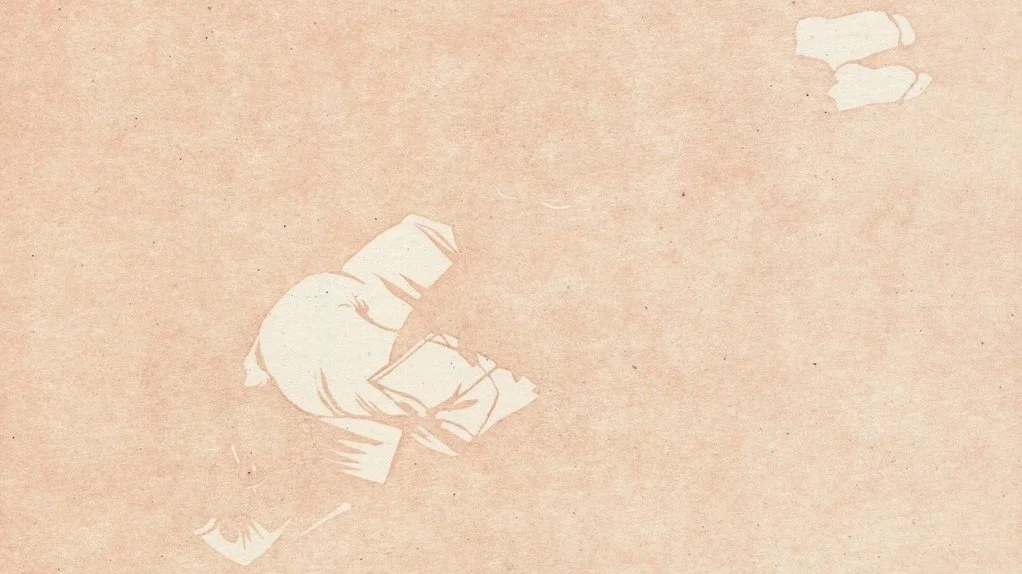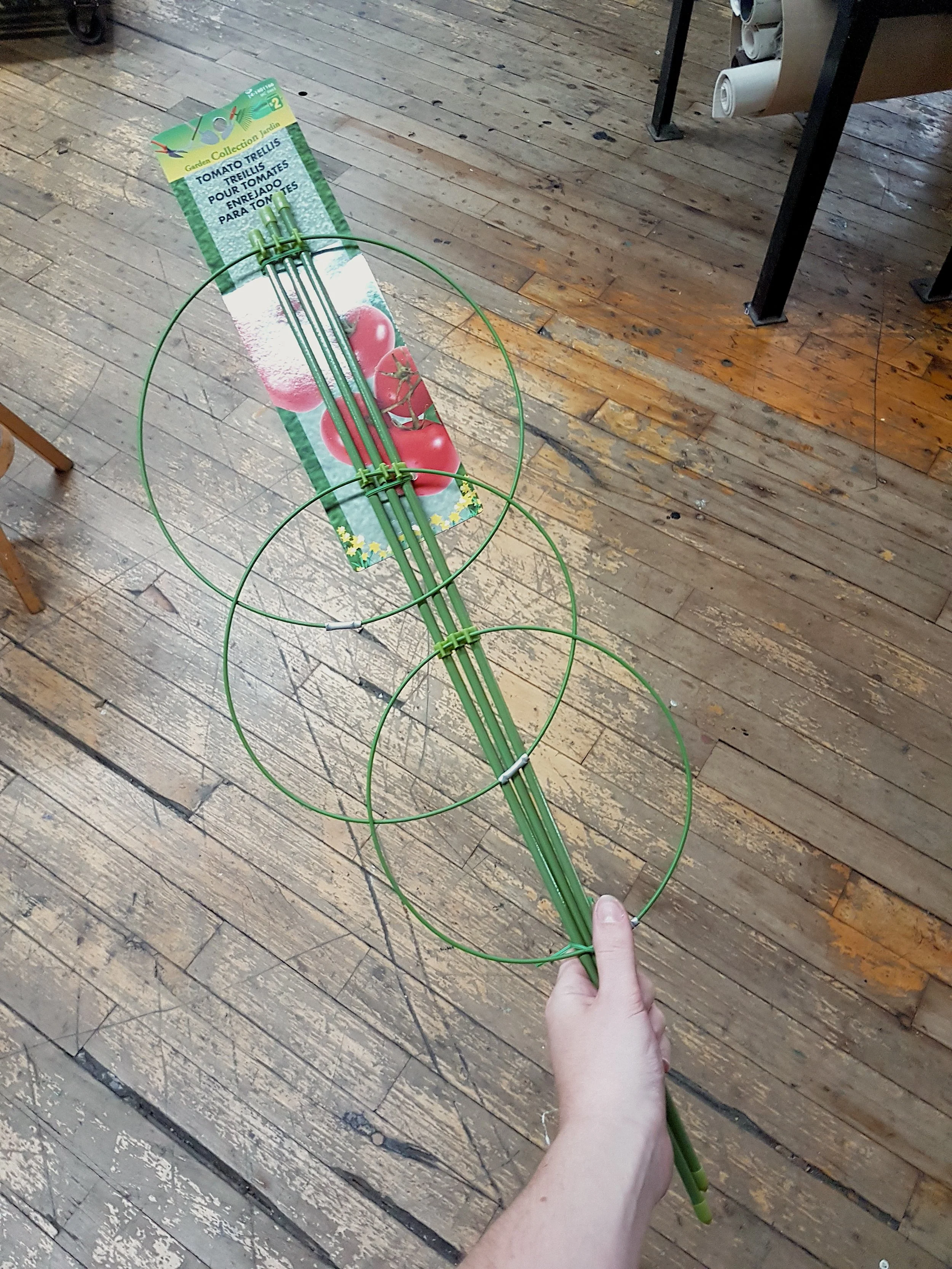What kind of art is this?
These are original prints: physical, tangible artworks, made by hand with technology as old as human history and tools built in the 60’s. I work with paper, linoleum, wood, ink, glue, and assorted other bits. None of it is reproducible by machine or replaceable by AI. It is art that feels materially like the past and the future.
I have turned a letterpress upwards of 50 thousands times (conservative estimate)
Printmaking on my Mind
The medium is the message. In my case, “why printmaking?” is difficult to answer from the present. I can tell you why I was keen to learn it in the first place (contagious enthusiasm) and why it’s practical from a professional arts standpoint (multiplicity). But ultimately, the last ten years of practice have rewired my brain so that even in other mediums, I think like a linocarver with access to a letterpress.
Linocut Reduction
Linocut is the practice of carving linoleum (like the flooring) into a stamp, which is then inked and impressed onto paper. There is no linoleum in the finished artwork, ink and paper only.
Linocut reduction involves using one piece of linoleum to print multiple layers in an edition of prints. You carve a little, ink and print your first layer in one colour, then carve a little more, ink and print in another colour on top, and repeat. Most of my artworks have 3-6 layers of printing each.
Linocut reduction is cool because it uses less material, requires less labour, allows for greater precision, and creates a more unified colour palette than in multi-block printmaking. I’ve been obsessed with it since 2017.
Letterpress
The letterpress I use is a Vandercook model that is the same age as my mom. It has a motorized mechanism that distributes ink to its various rollers and applies it automatically to the linoblock. It’s a lot faster and more precise than other ways of printing linocut, and requires specific expertise to operate and troubleshoot.
Using this kind of press has set me up to approach linocut in certain ways. I can print a lot faster than printmakers using other presses, and speed changes a lot of creative flow and strategy. I tend to print in transparent layers, since the automatic inking system is better at applying a thin even layer compared to inking with a brayer (roller), and I’ve experimented a lot with pressure printing (nerdy stuff, but it’s how I get the softness and galaxy vibes in certain prints like “You don’t have to tell me if you don’t want to” at the top of the page). It also informs the scale I work at. The largest comfortable printing size on the Vandercook in my current studio is 12x16”, and it’s one of the largest models. My scale restriction is a big part of the inspiration behind my sculptural and installation-based work.
Letterpress printing my first editioned book cover back in 2017 “Caterpillar Portraits” by Joyce Jodie Kim
Bookarts
My practice, as I graduated from university, took the form of a nano-publishing endeavour called Penrose Press. It’s a name I still use for my print sales website, and my now-silent Instagram account (abandoned in 2025). The original Penrose Press was collaborative, including writers, editors, graphic designers, and other contributors. More than 50 people put out 13 book editions in about 5 years. I took on most roles at least once, but my passion was for structure, design, and illustration. I made a scroll, an infinity book, and a book that had to be activated with water, among others. During this time, my mantra was “everything is a book”.
Bookarts is a language I don’t speak every day, but always use to communicate certain things. I think it’s apparent in my sculptural/interactive artworks, which feel like books in many ways.
“If a Carp Dreams of the Milky Way” by Jasmine Gui
Sculpture & Installation
This secondary/future aspect of my practice usually comes up when I want the feeling of printmaking alongside the presence of something BIG. I’ve been making little wallpaper designs since school (think: an 8x8” square print that aligns with itself to form a larger pattern), and you can often find them in my gallery and art fair installations. My foray into woodworking began with The Comfort House Project and was influenced by both my dad and my former day job as a custom framer.
The Artist Project Toronto 2024
Carpentry
I’ve been working with paper for decades, and in many ways, what you can do with wood feels like an extension of what you can do with paper. I love its timelessness, its warmth, and the way it takes colour. When I created “Labelled: Aquarius,” I did all of the wood cutting with a utility knife and a chisel. I’ve since graduated to coping and mitre saws, but table saws still scare me.
Found Materials
Another tendency I get from my dad: making do with something unexpected. My favourite example of this is that the metal rod that supports the top of the scroll of “If a Carp Dreams of the Milky Way” was sourced from the dollar store in the form of a tomato plant support stand (trimmed to length with a mini pipe cutter). We also used coat hangers, bike inner-tube bits, and tongue-depressors in the construction of the turning mechanism for “Branching Out”. My use of found materials is almost always structural/functional and rarely visible in the final artwork.
Patterns of Creativity
I love a pattern. I also love an aperiodic sequence based on an irrational number (penrose joke).
The scale of pattern in my work ranges from tiny and meticulously carved, in-scene wallpaper, to slightly larger prints that represent a single repetition in a greater compostion, to my sequential themes, and finally to years long waves of collaboration and solitary invention. My earliest creative practice was independent, and after university I centred collaboration. When I stepped away from publishing I relished in my individual creative freedom, and now, I’m dreaming of what exciting work could be done with more minds and hands involved.
If you want to follow along, I write a very nice email once every week or month (depending on my mood and public schedule) and you can have it in your very own inbox. The subscription form is in the footer next to the door to the library.
My home studio circa July 2025
















